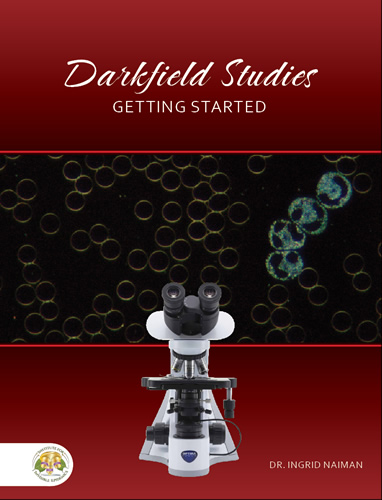 |
The first step in getting started with darkfield microscopy is to make sure that the system one is acquiring is configured to one's needs. Once deciding on the model and camera, one needs a few basic supplies and usually some assistance in setting up the system and learning to use it. Mistakes can be costly so it pays to have some help with the assembly and proper use of the equipment. Next, of course, comes the sampling and there are some tips for preparing the slides and coverslips as well as how to take the best sample possible. Then, the sample is placed on the microscope stage and explored. Depending on one's background, what one does and does not actually observe can differ. Being a medical doctor, hematologist, pathologist, or microscopist does not necessarily prepare one for interpreting what is seen in darkfield. Therefore, what is includied in the initial lesson involves scanning techniques, identification of the objects seen, and tips for resolving certain frequently observed issues such as spacing of blood cells, movement, and toxicity. From this point onwards, the emphasis will be on suboptimal conditions and how to resolve them using diet and herbs. Each lesson will address features often observed in darkfield such as rouleaux, zeta potential, evidence of exposure to yeast or mold, metal toxicity, chemical poisoning, intraerythrocytic infections like malaria and babesia, blood parasites that are found in the plasma, bacteria, and overall quality and efficiency of red and white blood cells. There is a lot to share and to assimilate so there will be many lessons, a forum for discussion, and a platform for uploading case histories, photomicrographs, and videos. |
Rouleaux is often the first feature that students of darkfield microscopy identify. The word, rouleaux, comes from the French term for a stack of coins and is actually the technical term used by microscopists. There are numerous different causes for rouleaux as well as varying symptoms and risks. In this lesson, the factors contributing to rouleaux as well as the corrections are covered in detail. The course includes downloadable material, case histories, dietary suggestions, and herbal remedies for different underlying causes.
Erythrocyte aggregation is different from rouleaux and may not be as widely distributed, but it is potentially quite dangerous. This involves clustering of cells that are tightly packed. It can lead to thrombosis. There are numerous potential causes ranging from diet, medications, viscosity of the plasma, infection or pathological conditions in the plasma or red blood cells, deformity of cells, pressure on veins and arteries, circulatory issues, and sometimes parasitization. Risks are higher when there is dehydration such as when flying at high altitude and sitting for hours without much movement. It can happen for other reasons such as cells sticking together because of damage to the surface membranes . . . which may, in turn, be due to chemical toxicity, very low zeta potential, or perhaps EMF interference with normal physiological functioning. The causes along with suggestions for treatment are part of this lesson.
The surface of the erythrocytes has a negative electrical charge so the cells should repel each other. Theories of exactly how this works vary somewhat between disciplines. Hematologists tend to put the emphasis on the specific properties of the sialic acid on the membranes of the red blood cells. Nutritionists often put a bit more emphasis on the hemoglobin inside the cells. There is wide agreement that normal cells will keep their distance from each other and that cells with low zeta potential will benefit from diets that correct for deficiency conditions.
There are many types of blood parasites. Some are intraerythrocytic, meaning they live mainly inside red blood cells. However, when they mature, the red blood cells rupture and cause symptoms such as are associated with malaria and babesia. Other parasites live mainly in the plasma and forage on nutrients as well as red blood cells. There are about 4000 known types of parasites that affect humans. These vary in eating habits, behavior, toxicity, and risks to hosts.
Though one of the most common sources of metal toxicity is amalgam dental fillings, mercury is just one of the many toxic metals contributing to health challenges. Aluminum and lead are also very common sources of metal toxicity, but arsenic, cadmium, and barium as well as other metals can cause serious risks, usually heavily impacting the immune system. In darkfield microscopy, the evidence of toxicity is very apparent, but the exact cause has to be determined using other diagnostic methods. Being aware of the underlying causes of toxicity and having the ability to monitor the benefits of chelation therapies is one of the many benefits of studying live blood.
